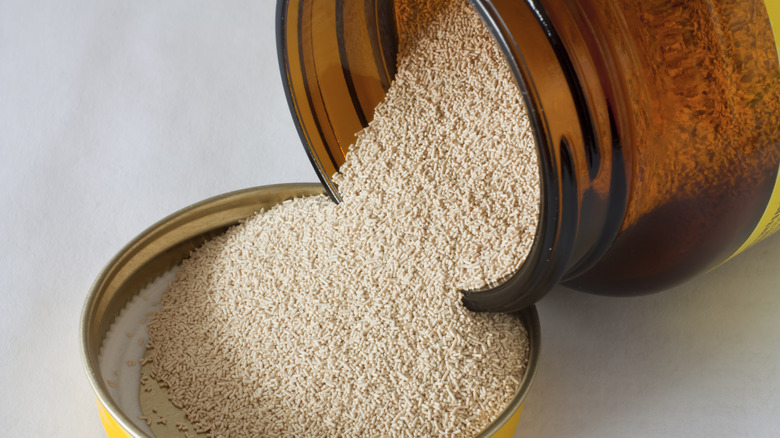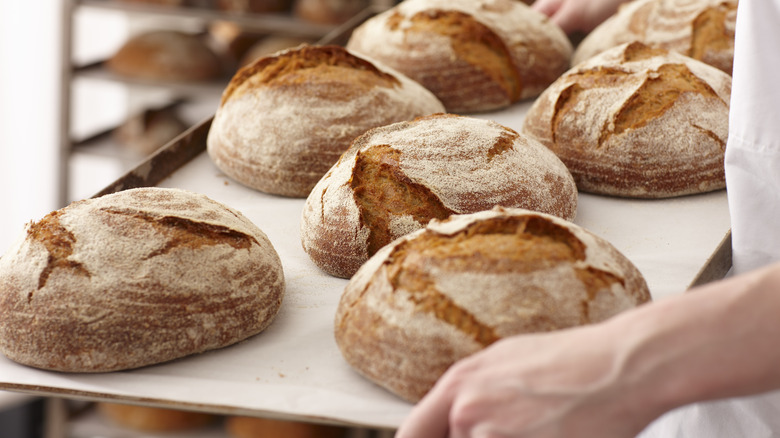What's The Difference Between Active Dry Vs Instant Yeast?
Yeast is used in virtually all baked goods and is responsible for dough rising. So, what's the difference between active dry and instant yeast? Ultimately, it's the same product but different structures — active dry yeast needs to dissolve in water for it to 'activate', while instant yeast can be mixed directly into your dry ingredients due to it being more finely milled.
Active dry yeast is the more commonly used of the two, even though it requires more work. To activate active dry yeast (a process also called proofing or blooming), mix a spoonful of yeast into a bowl of warm water and sprinkle in some sugar. The water dissolves the yeast particles which then 'eat' the sugar, i.e. transform it into carbon dioxide gas. After a few minutes, you should see a foamy substance form on top of the water. If nothing happens, there's a good chance the yeast is dead (which sounds harsh, but remember that it is actually a living organism).
This test is actually why active dry yeast is more popular than instant yeast. With instant yeast, you have no way of knowing if the yeast is still good until you proof your dough, and by then, you could have wasted your time and ingredients. However, if your instant yeast is good, then you can cut your baking time drastically as instant yeast releases more CO2, making dough rise higher and faster than active dry yeast.
When to use active dry vs instant yeast
When choosing between active dry and instant yeast, consider the clock. If you have under an hour to prep your baked goods, go with instant yeast. Goodies like cinnamon rolls only need one quick proof, so instant yeast is ideal. If time isn't really a factor, or if your recipe calls for a long proofing time anyway, then most bakers prefer active dry yeast. Since active dry yeast's viability is easier to check, if your dough needs hours to proof, you want to make sure that your yeast is alive and kicking. Sourdough can famously proof for up to 16 hours, and active dry yeast will allow the dough to rise slowly and evenly, developing that rich and tangy flavor we all love.
You can also interchange the two if a recipe calls for one type of yeast but you only have the other on hand. Whether you're whipping up a cheesy fig and arugula pizza for a dinner party, or trying your hand at a garlic cilantro naan for an authentic Indian favorite, any yeast you use will do the trick. The exchange ratio will stay the same, but you have to remember to activate your active dry yeast, and that will add an extra five to 10 minutes to your prep time.


